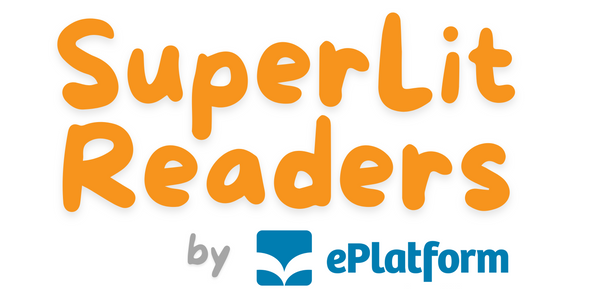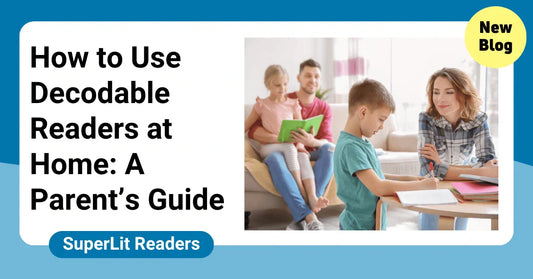Teaching Reading with Phonics
A Practical Guide for Educators and Families
Whether you're introducing phonics for the first time or refining your literacy program, this blog is your comprehensive guide to teaching reading with phonics. Grounded in the Science of Reading and aligned with systematic synthetic phonics (SSP) principles, you'll find practical strategies, research-backed insights, and classroom-ready ideas — all designed to help every child learn to read with confidence.
Table of Contents
- Introduction to Teaching Phonics
- Effective Methods of Teaching Phonics
- Research Highlights on Phonics Effectiveness
- Integrating Phonics into Broader Literacy Instruction
- The Role of Decodable Texts
- Phonics Assessment and Progress Monitoring
- Designing Effective Phonics Lessons
- Addressing Challenges and Diverse Needs
- Frequently Asked Questions

1. Introduction to Teaching Phonics
Phonics teaches students how letters correspond to sounds. When taught explicitly and systematically, it empowers learners to decode unfamiliar words with confidence. This approach is especially important for early readers and those with reading difficulties such as dyslexia.
2. Effective Methods of Teaching Phonics
The most effective phonics instruction is:
- Systematic: Follows a structured order of sound introduction
- Synthetic: Teaches students to blend individual sounds into words
- Explicit: Instructs phonics rules and patterns directly
Approaches like Systematic Synthetic Phonics (SSP) build from simple to complex, ensuring students master foundational skills before moving on. Learn more about Systematic Synthetic Phonics.
3. Research Highlights on Phonics Effectiveness
Phonics instruction is backed by extensive research. Key findings show:
- Phonics significantly improves word recognition, spelling, and reading fluency
- Explicit phonics is more effective than implicit or incidental approaches
- Early phonics instruction leads to long-term reading success
Frameworks like the Simple View of Reading and Scarborough’s Reading Rope highlight phonics as a key component of skilled reading.
4. Integrating Phonics into Broader Literacy Instruction
Phonics is one piece of the literacy puzzle. It should be taught alongside:
- Phonemic awareness: The ability to hear and manipulate sounds
- Vocabulary development: Learning new words in meaningful contexts
- Reading fluency: Developing automaticity and expression
- Comprehension skills: Understanding and engaging with texts
A well-rounded literacy block blends these elements to support whole-child reading development. Learn more about the Science of Reading.
5. The Role of Decodable Texts
Decodable readers are designed to match students’ phonics knowledge. They support:
- Application of newly learned phonics skills in context
- Reading independence without guessing
- Confidence building through success
Explore our 10-level decodable series or review our Scope and Sequence for a breakdown of each stage.
6. Phonics Assessment and Progress Monitoring
Ongoing assessment is critical to ensure students are mastering the phonics skills being taught. Tools may include:
- Phoneme recognition checks
- Blending and segmenting tasks
- Reading fluency passages using decodable text
- Spelling assessments to monitor encoding skills
Assessments help inform instruction, identify gaps, and group students for targeted support.
7. Designing Effective Phonics Lessons
Strong phonics lessons follow a clear routine. Elements may include:
- Review of prior sounds and graphemes
- Introduction of new phoneme/grapheme
- Blending practice (reading)
- Segmenting practice (spelling)
- Application through decodable reading and writing
Supplement lessons with worksheets and games to keep learning fun and multisensory.
8. Addressing Challenges and Diverse Needs
Not all students learn phonics at the same pace. Consider strategies for:
- Dyslexia support: Use high-structure, multi-sensory programs
- ESL/EAL learners: Provide visuals and vocabulary scaffolds
- Older struggling readers: Re-teach key skills without making materials feel "babyish"
Use data to group students and differentiate instruction based on their unique needs.
9. Frequently Asked Questions
Is phonics still effective beyond Year 2?
Yes. While most students begin in K–2, older learners often benefit from explicit phonics when decoding gaps remain.
How do I know if a phonics program is high quality?
Look for:
- A clearly mapped scope and sequence
- Fully decodable texts aligned to the sequence
- Explicit instruction in blending, segmenting, and phoneme-grapheme mapping
What’s the difference between phonics and phonemic awareness?
Phonemic awareness is the ability to hear sounds; phonics connects those sounds to letters. Both are essential, but phonics introduces print. Learn more about the Science of Reading.
Next Steps
Whether you're teaching in a classroom or supporting a learner at home, phonics is one of the most powerful tools you can use. It builds confident, capable readers — one sound at a time.
📘 Ready to get started? Explore the full SuperLit Readers series
🧠 Need a teaching roadmap? Download our phonics Scope and Sequence
🎯 Want engaging activities? Access our worksheets and games
— Happy Reading!






